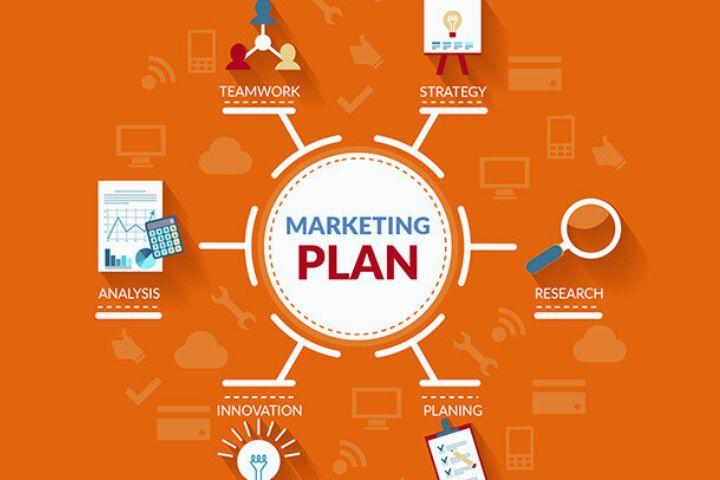Digital Marketing Plan: Now that we are thinking about 2024, we have set our objectives and our KPIs, having a Digital Marketing Plan is essential to achieve success. You got it? If you have not yet designed it or need to perfect it, in this post I bring you the basic information for its preparation.
Table of Contents
What Is An Online Marketing Plan?
A Digital Marketing Plan is a set of strategies that use online channels to promote products or services. It includes specific objectives, identification of the target audience, tactics to attract customers, selection of digital platforms (such as social networks, SEO or online advertising), and a calendar of actions. This plan seeks to maximize brand visibility, improve user engagement, and convert leads into customers. Web analytics is essential to evaluate performance and adjust strategy. A well-structured plan helps companies take advantage of digital opportunities and adapt to changing market dynamics.
In short, it is a marketing strategy adapted to the digital world. You can follow all the steps (objectives, SWOT Analysis, etc.) of a “conventional” marketing strategy. And of course it doesn’t matter if it is a large company or a business strategy for SMEs.
How Is A Digital Marketing Plan Made?
Developing a Digital Marketing Plan involves careful planning and execution to maximize online presence and achieve business objectives. Let’s examine the essential actions you must do:
-
Set clear goals
Define specific and achievable goals. They may include increasing brand visibility, generating leads, improving social media engagement, or increasing conversions.
-
Identify the target audience
Understand your audience. Analyze demographics, online behaviors and preferences to tailor your strategies to their needs.
Use SMART goals
-
Analysis of the competition in your digital marketing plan
Examine your competitors online. Identify what tactics they are using, their strengths and weaknesses to adjust your approach.
-
Channel selection and tactics
Choose the digital platforms most suitable for your audience. This may include social media, SEO, paid advertising, email marketing, among others. Adapt your message to each channel.
-
Content development of a digital marketing plan
Provide insightful and timely information that appeals to your readers. Use blogs, videos, infographics and other formats depending on the platform and interests of your audience.
-
Calendar and frequency
Establish a calendar of publications and activities. Consistency and frequency are key to maintaining an online presence and engaging your audience.
-
Budget
Determine the financial resources for each tactic and plan an ROI for each segment of actions. Establish a budget based on the famous circle of OWNED MEDIA, PAID MEDIA and EARNED MEDIA as well as analysis tools, and any other associated expenses.
-
Implementation and monitoring
Execute your plan and monitor its performance. Use analytics tools to evaluate traffic, engagement, and conversions. Adapt your plan in light of the outcomes.
Remember that in order to analyze and carry out good monitoring, it is essential to establish the appropriate KPIs. I recommend that you read my post on Metrics and KPIs in a Digital Marketing Plan
-
Continuous optimization
Digital marketing is dynamic. Learn from the data and adjust your plan based on market trends and your audience’s behavior. Adaptability is key to long-term success.
-
Evaluation and reporting
Conduct periodic evaluations of your plan. Generate reports that highlight achievements, identify areas for improvement, and guide future digital marketing strategies.
Digital Marketing Plan Example
You will find numerous examples of Digital Marketing Plans on the internet. Taking a look at them will help you design yours. However, in this last section I give you a fictitious example, very summarized, that will be most practical for you:
Digital Marketing Plan for XYZ Fashion Boutique
Let’s assume that we have a clothing ecommerce store called XYZ Fashion Boutique and that our main objective is to increase online sales by 20% in the next six months. To do this, it would be necessary to develop the following points:
- Analyze how to generate traffic to my website.
- How to qualify traffic according to the origin of the channel.
- Focus on Instagram and Facebook if, for example, our audience is women between 18 and 35 years old.
- Implement an engaging visual content strategy, highlighting key products and exclusive promotions.
- Allocate a monthly budget for paid advertising on these platforms and we will use Google Analytics to evaluate performance.
- Maintain an active presence on social networks, responding to comments and messages.
- Finally, conduct monthly reviews to adjust the strategy based on the results.
I remind you again that these simple steps are valid for any size of company. I apply it at Anta Consulting (tax consulting) and if you follow the indicated steps you will obtain an effective Digital Marketing Plan, which can increase the visibility of the brand, attract the right audience and generate measurable and sustainable results in the digital environment.
